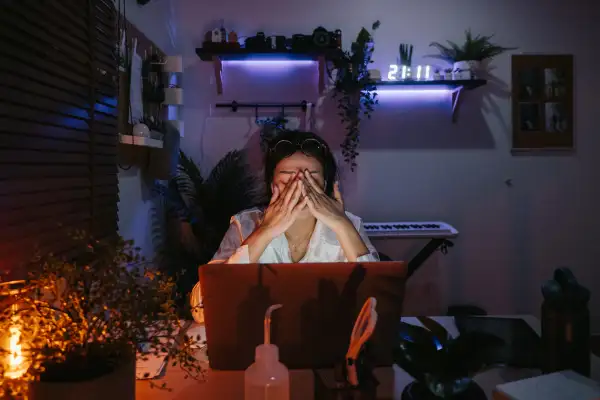Women Are Even More Burned Out on the Job Than They Were a Year Ago

Job burnout is real — especially for women.
Burnout is escalating much faster among women than men, with 42% of women reporting being burned out compared to 35% of men, according to the seventh annual report on women in the workplace from McKinsey & Company and LeanIn.Org. The gap has nearly doubled from a year ago when 32% of women and 28% of men reported job burnout.
A few months into the pandemic, one in four women said they had considered downshifting their careers or leaving the workforce for a year. Now, that number has jumped to one in three women, according to the study, which includes data and insight from 423 companies representing more than 12 million people and survey responses from 65,000 individual employees.
The pandemic took its toll on employees, with millions losing their jobs and many unexpectedly shifting to remote working, putting in more hours than they did before the pandemic.
But for women, the situation is especially dire. Research shows women were hit harder than men by the layoffs, and that they took on more of the childcare responsibilities when schools and daycares closed. Millions of women who left the workforce during the pandemic haven't returned, and many of those who are working have been unable to find jobs of the same status or pay that they had before 2020.
What's causing job burnout?
So what's the main factor explaining burnout in the workplace? The feeling of needing to be constantly "on," according to the study. While most employees have the flexibility to take time off from work — or at least step away from the computer for a bit — more than a third feel as though they need to be available 24/7. Nearly half think that they need to work long hours to get ahead.
Women of color face even more challenges that eventually lead to burnout. In general, women who are one of the only women in the room at work face challenges like being interrupted and having their judgement questioned. The problems are even worse for women who are the only representatives of their race at work. Those "double onlys" — as the report calls them — are even more likely to experience burnout.
Being a mother to young children just compounds the issue, with 47% of mothers with young children feeling burned out often or almost always. Meanwhile, 55% of mothers of young children who are the lone woman in their workplace feel this way.
Companies are attempting to fix the problem with mental health benefits, additional support for parents and caregivers and offering more paid leave, according to the study. But as burnout continues to increase among women, employers will need to listen closely to their employees and experiment with creative solutions.
More from Money:
It's Confirmed: The Workweek Is Indeed Longer Now That You're WFH
Here's Why You Should Ask for a 5% Raise Right Now
Companies Are So Desperate to Fill Jobs They're Getting Rid of Drug Tests

